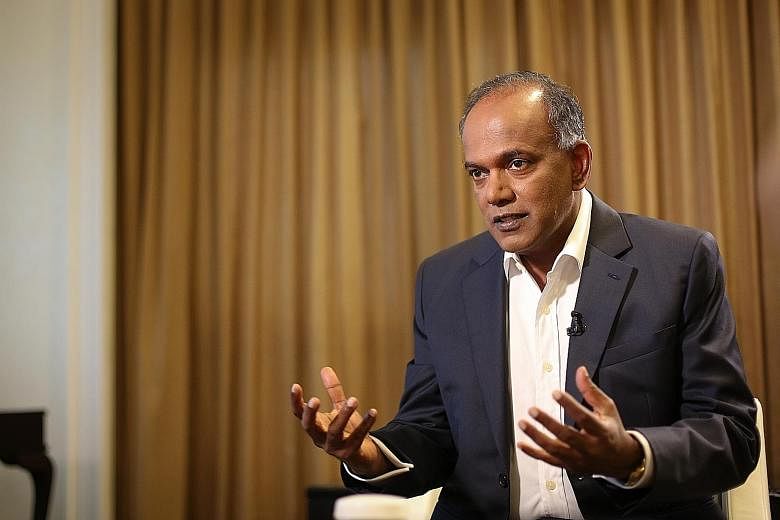Home Team agencies like the police force and Central Narcotics Bureau (CNB) are set to be more closely integrated and technology-enabled, so as to overcome tightening manpower resources and growing security challenges, such as cybercrime, drugs and terrorism.
Speaking to The Straits Times in an exclusive interview recently, Home Affairs and Law Minister K. Shanmugam said the Home Team is taking action ahead of manpower constraints in terms of the number of officers it can recruit. "We are not unique. We're going to get less officers. We're going to have to do more with less," he said.
Declining birth rates in Singapore have posed manpower challenges and prompted various government ministries to take action recently.
Mr Shanmugam outlined some initiatives in an ongoing transformation within the Home Team, announced last year and targeted for completion by 2025.
For example, to cut the number of man hours needed, artificial intelligence will be used "in a much more significant way", he noted ahead of the Home Team Show and Festival to celebrate its officers and to mark 50 years of national service. This includes more automated processes, with the use of facial recognition.
While recognising the sensitivities in the sharing of data among agencies like the police and CNB, he said intelligence officers can eventually be housed in the same place, allowing some information exchange.
This comes as there are more complex incidents requiring a swift response from different agencies.
Integration is already taking place. By the year end, police, CNB, Singapore Civil Defence Force and Immigration and Checkpoints Authority officers will sit side by side at the Police Operations Command Centre. This was announced during the Committee of Supply debate in March.
By end-2023, all departments' operations centres are expected to be housed under one roof at the Home Team Operations Centre in a new complex. This is to enable faster communication, enhancing the coordination of the ground response in major incidents or crises.
Separately, ST understands that the Ministry of Home Affairs (MHA) is looking to build a new development by 2022 next to the Police Cantonment Complex in Neil Road. While MHA said it is "unable to provide further information at this point", plans include two separate blocks, with the conservation and incorporation of the former St Matthew's Church and Kindergarten at the site. Construction is expected to begin in October next year, and works completed by March 2022, according to documents seen by ST.
Of the communication between agencies currently, Mr Shanmugam said: "Today, it is on the basis of requests and assessment.
"We want to make it a little bit more seamless by access through the IT systems, and also develop a common core of people across agencies who understand each other."
As this integration takes place, technology like facial recognition and systems that can automate officers' work are among those in the pipeline, Mr Shanmugam revealed.
With threats to infocommunications systems in Singapore, detection and prevention comes down to having the right cyber-security technology, he said. With the integration of data, when a person reports an incident, the investigation officer can be quickly alerted to similar recent cases, in addition to persons of interest from around the area.
But Mr Shanmugam said that while technology like facial recognition is being tested, it will take some time before it can be rolled out. Designing and implementing such systems successfully requires people with "the right specialisation".
"Investing in people with the right specialisation, investing in the technology, we're doing all of this at the same time and... trying to integrate the different agencies," he added.



